For “Winged Wednesday” and the 4th. July:
___________
Chestnut Antpitta


The Chestnut Antpitta is a small, plump bird that usually stays well-hidden in dense vegetation. At least two widely-disjunct populations occur; these differ in voice, and may prove to be separate species once the genetics of the Chestnut Antpitta and the closely-related Rufous Antpitta are further studied.
The biggest threat to this species is ongoing deforestation, but ABC and its Peruvian partner ECOAN are working to protect its habitat in both portions of the Chestnut Antpitta’s range.
Abra Patricia protects more than 24,000 acres of cloud forest habitat for this and many other rare, endemic species. Park guards near the Owlet Lodge in the reserve have recently habituated a Chestnut Antpitta to worm feeding making it easy for visitors to see and photograph.
ABC and ECOAN have also been working with local communities to protect forests in the Carpish Mountains and other mountains near Huanuco, resulting in the creation of two additional protected areas. Learn more about ABC and ECOAN’s work in central Peru!
If you are interested in visiting Abra Patricia, please see ConservationBirding.org
Help ABC conserve this and other birds and their habitats!
Photo by Jon Hornbuckle; Range Map, NatureServe
____________
Wild Bird Webcams
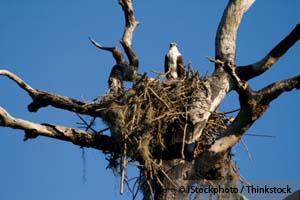
“Strategically placed webcams across the globe now give us access to view all kinds of wildlife in its natural habitat, unmolested by humans.
- We picked four wild bird live cams for your viewing pleasure, plus a webpage with an extensive list of links to nest cams.” See list at: http://healthypets.mercola.com/sites/healthypets/archive/2012/06/13/wild-bird-webcams.aspx
____________
Areas With Intense Noise May Cut Baby Birds Survival Ratio
“Baby bluebirds don’t survive as well near rumbling traffic and other human din as they do amid natural lullabies.
In a Virginia study, 35 percent more chicks died in the noisiest nests than in the most remote ones. Researchers found that chicks didn’t adjust for the noise by begging  louder or at different frequencies. So parents may not have gotten the right cues for nestling care, behavioral ecologist John Swaddle suggested June 12 at the annual meeting of the Animal Behavior Society.
louder or at different frequencies. So parents may not have gotten the right cues for nestling care, behavioral ecologist John Swaddle suggested June 12 at the annual meeting of the Animal Behavior Society.
Until recently, most research on how human-made noise discombobulates birds has focused on how adults adjust their songs (or don’t) or on what species will nest at all among the din. Research is now turning to how noise might directly affect the success of a species. One earlier study on reproductive success, in common European birds called great tits, found smaller clutches near roaring highways.” More at: http://staugnews.com/2012/06/17/area-with-intense-noise-may-cut-baby-birds-survival-ratio.html
___________
Hawaii's Birds Threatened by Invasive Predators, Habitat Loss
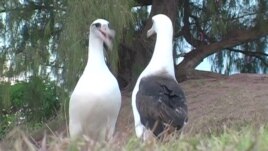
 “On the U.S. Pacific island state of Hawaii, an invasive predator is threatening many native bird species with extinction. The predator is the mongoose, a non-native mammal introduced to the island chain over a century ago to control rats in the sugar cane fields.
“On the U.S. Pacific island state of Hawaii, an invasive predator is threatening many native bird species with extinction. The predator is the mongoose, a non-native mammal introduced to the island chain over a century ago to control rats in the sugar cane fields.
Now, environmental groups say, it's the mongoose that's out of control, feeding on the eggs and chicks of the island's many ground-nesting birds, including several endangered species that lay just one egg per year.
Many people think of the Hawaiian islands as a Pacific paradise, a string of tropical islands lush with exotic flora and fauna. But the islands' native species - especially birds - have been under increasing pressure since humans first settled there.
"Mongoose are not great climbers of trees but they are very capable of taking the nestlings and eggs of ground-nesting birds, and that would be particularly devastating for Hawaiian water birds," Wallace said.
The mongoose have no natural enemies on the Hawaiian islands. They are a common sight along roadsides and near garbage dumps. The island of Kauai had been free of mongoose until recently so its birds are doing better than those on the other islands.” More at: http://www.voanews.com/content/hawaii-birds-predators/1352944.html
___________
‘Eagle’-eye photographer solves mystery of missing Chaska bird
“A wounded eaglet rescued after a severe storm 14 years ago in Chaska has been tracked to a nest in St. Peter, where it is flourishing.”

Freedom’s leg band confirmed that he is the eaglet rescued in Chaska 14 years ago.
“Fourteen years ago, straight-line winds blasted through the Chaska area, downing trees and power lines and damaging roofs. On the Gedney Pickle factory's property, a huge eagle nest with two eaglets crashed 60 feet to the ground. One of the six-week-old eaglets died but volunteers quickly created a makeshift nest out of a massive fan screen, hauled it up the tree and returned the surviving eaglet to the manmade nest.
Until last month, the rescue team didn't know what ultimately became of the eaglet. But that mystery has been solved, thanks to a curious wildlife photographer in St. Peter, Minn.
Jon Smithers became "hooked" as a photographer in late 2003 after seeing a pair of eagles perched high above the Minnesota River. When he spotted them again a month later, he noticed a metal band around the male's lower leg. "Ever since I saw that band, I really wanted to know the story behind the eagle," he said. It took more than eight years to find out.” More at: http://www.startribune.com/local/west/159141975.html
___________
Hawk Mountain needs help to find declining raptors
Four raptors need monitoring
File photo of a Barn Owl (TOM FEGELY/THE MORNING…)
“If you've got 10 acres of farm or grassland and are have any interest at all in birds or endangered species, Hawk Mountain Sanctuary in Kempton is looking for you.
No, the nation's first raptor sanctuary does not want to do anything with your land. What they organization would like, however, is cooperation to help watch for and report on four species of farm-friendly birds, three of which are in sharp decline.” From: http://articles.mcall.com/2012-06-12/sports/mc-hawk-mountain-project-20120612_1_barn-owl-hawk-mountain-sanctuary-northern-harrier
___________
Federal Agencies Sued Over Failure to Disclose Correspondence with Wind Industry - Promise of Government Transparency Not Being Met

Snowy Owl and wind turbine by David A. Krauss
(Washington, D.C., June 26, 2012) “In a lawsuit filed today in Washington D.C. District Court American Bird Conservancy has accused the federal government of suppressing information about wind energy projects and their potential negative impact on America's wildlife.
In President Obama’s first month in office, he directed federal agencies to respond to the public’s FOIA requests promptly and in a spirit of cooperation. The President said, ‘A democracy requires accountability, and accountability requires transparency.’ With this lawsuit, ABC is asking the Department of the Interior to carry out the President’s promise,” said Fuller. “Some DOI offices have not sent a single document that we asked for, even though the agencies were legally required to do so more than seven months ago.”” More at: http://www.abcbirds.org/newsandreports/releases/120626.html
___________
The Raven: One Very Smart Creature
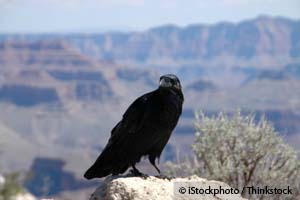
“Ravens are large-bodied members of the crow family. The ones most common in North America are all black in color with large beaks. Ravens, despite their incredible intelligence, are often maligned in stories and fables.
Ravens remember friends and perceived enemies for years after meeting them. Like humans, they possess the ability to memorize and categorize their relationships with other animals. Ravens also use logic to problem-solve – an ability that is lacking or only present to a limited extent in other animals.” Rest of article about ravens at: http://healthypets.mercola.com/sites/healthypets/archive/2012/06/20/smart-ravens.aspx
__________
____________

___________
How the Blessings of Abraham Came to America
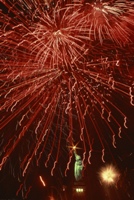 “As the United States turns 236 years old July 4, let’s revisit her rise to world dominance. Let’s see what made America great and trace her real roots. The Bible shows that with great blessings come great responsibilities.
“As the United States turns 236 years old July 4, let’s revisit her rise to world dominance. Let’s see what made America great and trace her real roots. The Bible shows that with great blessings come great responsibilities.
The United States has been the most materially blessed single nation in history. Though few have recognized it, America’s rise to superpower status was the result of one man’s faithfulness to God.
Some 4,000 years ago God called a man named Abram (whose name God later changed to Abraham). God told Abram to leave his present country and go where He would lead him. God promised Abram that if he obeyed, He would cause many nations and kings to come from his lineage (Genesis 17:1-6).
Abraham continued to be faithful to God, and when Abraham passed the supreme test of being willing to sacrifice his son, God made an unconditional promise that his descendants would be innumerable and have world dominance (Genesis 22:16-18).
Promise of national greatness passed down
This birthright promise was passed down to Abraham’s son Isaac, then to Isaac’s son Jacob, and then to Jacob’s son Joseph.
Joseph had two sons while he was in Egypt, Ephraim and Manasseh. Just before Jacob died, he adopted these two grandchildren and made them part of his birthright promise (Genesis 48:13-16).
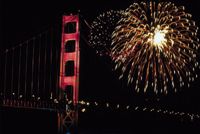 Jacob also gave a prophecy about his two grandchildren. He said that Ephraim would be a great company of nations, and Manasseh would be a great single nation (Genesis 48:19). Jacob foretold that in the last days the descendants of Ephraim and Manasseh would be a colonizing people (Genesis 49:1, 22). They would prevail in wars because God would be with them (verses 23-24). And they would also inherit great natural resources (verses 25-26).
Jacob also gave a prophecy about his two grandchildren. He said that Ephraim would be a great company of nations, and Manasseh would be a great single nation (Genesis 48:19). Jacob foretold that in the last days the descendants of Ephraim and Manasseh would be a colonizing people (Genesis 49:1, 22). They would prevail in wars because God would be with them (verses 23-24). And they would also inherit great natural resources (verses 25-26).
Ancient Israel failed to receive the full birthright promise
God wanted to give ancient Israel national greatness. When He made the covenant with them in the wilderness, He told them they would become great if they obeyed Him.
We know that Israel did not obey God, and eventually 10 of the tribes, including Ephraim and Manasseh, went into captivity to the Assyrians in 721-718 B.C. From this point forward, they were scattered and seemed to disappear from the historical records.
What became of God’s promises to Abraham? Many Christians understand that the promise of salvation through Abraham’s Seed was fulfilled in Jesus Christ (Galatians 3:16). But what of the physical birthright promises? If we believe that God fulfills all His promises, we will look for a company of nations and a powerful single nation who have been blessed by God.
Where did the Israelites go?
Even though Israel was scattered, God said He would keep and preserve them (Amos 9:9). The Bible tells us in several passages including Isaiah 49:12 that the Israelites migrated northwest (of Jerusalem) and to the “isles afar off” (Jeremiah 31:10). Northwest of Jerusalem is the British Isles!
Is it just a coincidence that the word British resembles two Hebrew words “beriyth-iysh,” which mean “covenant man”? The Bible repeatedly refers to the covenant (agreement) God made with Israel (Exodus 19:5; Deuteronomy 4:13).
The Bible also says that God’s people would be known by Isaac’s name (Genesis 21:12). Americans and Britons are known as Anglo-Saxons. “Saxons” is simply a derivation of “Isaac’s sons.”
America and Britain become world powers
Before 1800, both America and Britain were regional powers. But shortly after 1800, both suddenly received many blessings. First Britain then the United States became world-leading superpowers.
In 1803 the United States acquired the Louisiana Purchase, which nearly doubled the size of the country. Britain’s empire suddenly spread around the globe, and the sun never set on her company of nations. At their peak, America and Britain came into possession of more than two-thirds of the world’s resources and wealth. These blessing fulfilled the biblical promises.
There isn’t enough space to fully explain it here, but study of Leviticus 26:18 in connection with the prophetic day-for-a-year principle (Numbers 14:34; Ezekiel 4:6) shows that God withheld the birthright promise for 2,520 years because of ancient Israel’s continued disobedience. Israel went into captivity between 721 and 718 B.C., and 2,520 years later was around A.D. 1800-1803! Yes, God’s hand is obvious when we look.
So what does it all mean?
There are many more biblical and historical clues that America and Britain are indeed the descendants of ancient Israel, and we plan to publish more on this in the future. This subject is important because many of the Bible’s end-time prophecies deal with the modern descendants of Israel, especially the coming “time of Jacob’s trouble” (Jeremiah 30:4-7). It’s time to read our Bibles and see what God expects of us and what the future holds!
For more information about America’s roots with ancient Israel, read our blog post “America’s Growing Infidelity.” And to learn more about what God expects of us now and promises for the future, read our booklet The Mystery of the Kingdom." From: http://cogwa.org/blog/entry/how-the-blessings-of-abraham-came-to-america
___________
Interesting facts about the Liberty Bell:
And: Did you know that the Bible has a lot to say about the subject of freedom and liberty?
___________
On This Day:
Lewis and Clark celebrate July 4, Jul 4, 1804:
“Staging the first-ever Fourth of July celebration west of the Mississippi River, Lewis and Clark fire the expedition cannon and order an extra ration of whiskey for the men.
Six weeks earlier, Lewis and Clark left American civilization to depart on their famous journey. Since their departure, the party of 29 men--called the Corps of Discovery--had made good progress, traveling up the Missouri River in a 55-foot keelboat and two dugout canoes. When the wind was behind them, Lewis and Clark raised the keelboat sail, and on a few occasions, managed to travel 20 miles in a single day.
By early July, the expedition had reached the northeastern corner of the present-day state of Kansas. The fertility of the land astonished the two leaders of the expedition. Clark wrote of the many deer, "as plenty as Hogs about a farm," and with his usual creative spelling, praised the tasty "rasberreis perple, ripe and abundant."
On this day in 1804, the expedition stopped near the mouth of a creek flowing out of the western prairie. The men asked the captains if they knew if the creek had a name. Knowing none, they decided to call it Independence Creek in honor of the day.
The expedition continued upstream, making camp that evening at an abandoned Indian village. To celebrate the Fourth of July, Lewis and Clark commanded that the keelboat cannon be fired at sunset. They distributed an extra ration of whiskey to the men, and the explorers settled back to enjoy the peaceful Kansas night. In his final journal entry of the day, Clark wondered at the existence of, "So magnificent a Senerey in a Contry thus Situated far removed from the Sivilised world to be enjoyed by nothing but the Buffalo Elk Deer & Bear in which it abounds & Savage Indians."
The next day, the travelers resumed their journey up the Missouri River toward the distant Pacific Coast. They would not pass by their pleasant camping spot in Kansas again until their return journey, two years and many adventures later.”
___________
Pathfinder lands on Mars, Jul 4, 1997:
“After traveling 120 million miles in seven months, NASA's Mars Pathfinder becomes the first U.S. spacecraft to land on Mars in more than two decades. In an ingenious, cost-saving landing procedure, Pathfinder used parachutes to slow its approach to the Martian surface and then deployed airbags to cushion its impact. Colliding with the Ares Vallis floodplain at 40 miles an hour, the spacecraft bounced high into the Martian atmosphere 16 times before safely coming to rest.
On July 5, the Pathfinder lander was renamed Sagan Memorial Station in honor of the late American astronomer Carl Sagan, and the next day Sojourner, the first remote-control interplanetary rover, rolled off the station. Soujourner, which traveled a total of 171 feet during its 30-day mission, sent back a wealth of information about the chemical components of rock and soil in the area. In addition, nearly 10,000 images of the Martian landscape were taken.
The Mars Pathfinder mission, which cost just $150 million, was hailed as a triumph for NASA, and millions of Internet users visited the official Pathfinder Web site to view images of the red planet.”
__________
Yesterday:
Jay called to say he wouldn’t be here, said he was going to be doing something for his mother. I knew Ray wouldn’t be here as it is the day he gets his check, and puts some of it in my bank. So I thought that I had better do something constructive during the morning hours that we are usually working around here.
I still spent an hour longer than I intended messing about on the computer, but finally got around to doing some more on the drapes for the cargo trailer. I had some of that tape that you can sew on, pull the strings and it gathers the drapes, and I also have a gatherer that fits on my machine. Either of those would be easy. But this is such rich looking fabric that I wanted it to be nicer than just gathered. That just looks like curtains, and these are drapes.
So I spent a long time re-measuring, re-checking the spacing, and pinned pleats into place on the fabric. The first drape always takes the longest to make, until you get into the swing of it. But other things, like looking up car parts for Ray, sending in some info for a class action suit, and answering some emails, stopped me from getting it sewn yesterday.



















3 comments:
My one dog, the oldest, is deathly afraid of fire-works or anything that goes bank or boom. Told about last night on my blog this morning.
LakeConroePenny,TX said...
Thank you for your comment, Dick.
Yes, I read about Ginger Muffin's fear of thunder and fireworks. Such a shame, I wonder why it affects some dogs and not others.
My Misty may be near blind, but her hearing is excellent. She can hear a crumb drop from the other side of the room, but she is not scared of banging things.
Happy Tails and Trails, Penny
Post a Comment